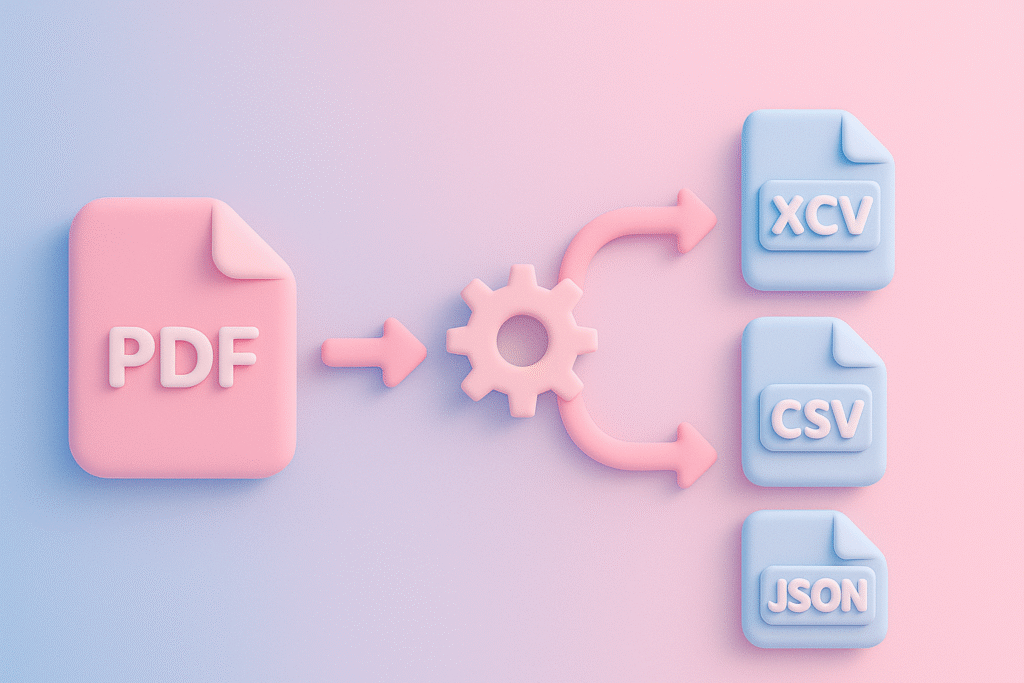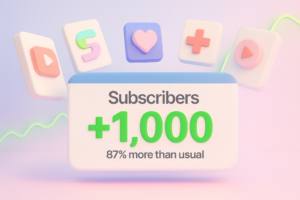Today, businesses deal with PDF files of all kinds, from invoices and contracts to reports and receipts.
Although Portable Document Format is good for sharing and preserving formatting, it is quite challenging to extract data.
The main issue is that PDFs are not comfortable for the manual work of copying and pasting data, as it is not only time-consuming but also error-prone.
However, AI-powered tools solve the issue, allowing enterprises to work with static documents, extract valuable insights, and supercharge existing data management efforts.
The paper highlights the benefits and principles behind AI data extraction and explains how it helps businesses in 2025.
Optical Character Recognition Process
OCR is beneficial because it can convert the scanned images of the paper document or its printed version.
Modern AI-based OCR systems can read even poor-quality scans, handwritten notes, and even unusual font styles with high accuracy.
If the document is not available in PDF format, the same technology can be applied to the image file.
Natural Language Processing: NLP is used to overcome the limitations of cognitive capabilities by scanning data in the same way people do. Modern NLP bots can interpret not only the presence of the text but also its meaning, relationship to other words, and contextual meaning.
Machine Learning Process: ML helps a bot detect hidden patterns or unlikely occurrences, especially if it misses the structure of information. It learns from examples and becomes more accurate with time. Since ML is used, accessing new document types or templates should not take a lot of work from the developer, as it is done automatically.
Computer Vision: For the PDFs with images such as diagrams, forms, or receipts, which are common for invoices, computer vision algorithms can help interpret the visual and apply it to text files. This approach is particularly necessary for the search for specific documents that may be filed as images or for image recognition in general.
Benefits of AI-Powered PDF Data Extraction
The utilization of AI tools in PDF data extraction provides several pragmatic benefits:
Speed and efficiency: AI systems can work in seconds, with the extraction of hundreds of pages requiring no more time than single pages. It helps the team avoid repeated hours of manual work.
Accuracy and consistency: By minimizing human intervention, AI excludes conventional human error and presents the output in a format standardized for validation. infoparison.
Scalability: It does not matter whether the user needs to extract information from 10 PDFs or 10,000; the systems can scale up with no added time requirements for data extraction.
Cost reduction: Automating data entry allows for to avoidance of labor costs, as the process no longer requires manual input or subsequent processing.
Integration and automation: Since the data is extracted, it can be utilized in databases, CRMs, or ERPs with no additional effort, and their work can be automated.
From PDFs to Insights: The Smart Transformation
The actual disruptive thing about AI tools is the power to turn documents into data and let businesses act upon it instantly.
On the level of a financial department, companies can now automate expense reporting; on the level of logistic teams, delivery notes are turned into end-to-end shipment details, and HR departments can finally extract information about candidates from resumes. T
his is how the transition from static, historical documents to something that can be as dynamic and as analytic as data becomes possible.
Finance and Accounting
Automated data extraction from receipts, invoices, and other financial documents allows the document-heavy industry to process vendor information, transaction data, and payment terms summarized in a single expense paper.
It also translates into benefits for reconciliation and compliance checks.
Healthcare: Now, hospitals and research institutions can extract patient details, diagnostic reports, and test results recorded in the medical PDFs. The benefit of the novel technology is that all the information is acquired more quickly and accurately than in the manual processing of each report.
Legal: Law firms benefit from an AI tool that automatically extracts clauses of the contract, followed by its dates and names listed in an unusually long commercial or other form of arrangement. The amount of time to be saved is terrific, as beyond an hour of human work is required to read a 10-page contract to the end.
Conclusion
PDF data extraction was transformed from a tedious, manual process into an intelligent solution, capable of processing entire documents and maintaining their context.
By using OCR, NLP, and ML, AI combines the best of its capabilities to shorten the time of processing. By using these tools, companies are not only accelerating their workflows.
They are also gaining a strategic advantage, the strength to unlock insights earlier and use accurate, close-to-real-time data for decision-making.
In a world where information drives innovation, AI makes sure that none of its holders will be trapped in a PDF file. As a result, the whole process of document processing will soon be transformed into a valuable opportunity, rather than a chore.








